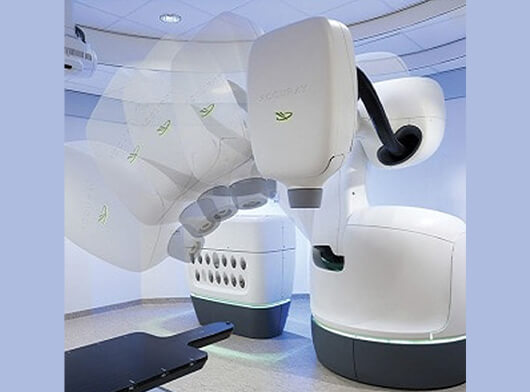The specialized equipment focuses many small beams of radiation on a tumor or other target. Each beam has very little effect on the tissue it passes through, but a targeted dose of radiation is delivered to the site where all the beams intersect .The high dose of radiation delivered to the affected area causes tumors to shrink and blood vessels to close off over time following treatment, robbing the tumor of its blood supply.
Stereotactic radiosurgery is a team approach, involving specialists in radiation oncology and a physicist. A physicist calculates the amount of radiation the patient should receive, a key element of planning the procedure is maximizing the treatment to abnormal tissues, while protecting healthy tissues around the abnormal area. Together, these experts plan the procedure.
Treatment may take place at an outpatient center. There is no incision or cutting. If you are being treated for a lesion in the brain, a head-holder will be placed on the head to keep it totally still. During the treatment, the patient will be on a hard table, like the table used for MRI or CT scans. The treatment team will program the machine and deliver the X-rays for the treatment, which include several doses of focused X-rays. After the treatment, patient will be observed to make sure the patient is feeling well.



.png)

